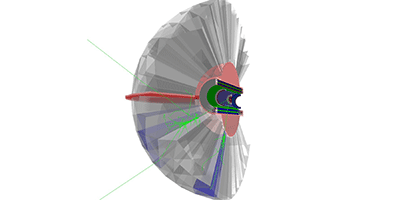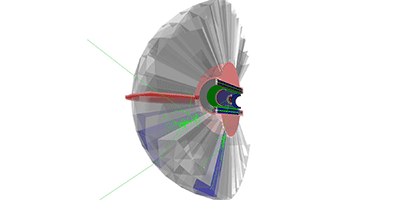Neutron Skin Turns Out to Be Soft
Heavy nuclei typically have a neutron-rich outer layer. Physicists have measured the thickness of this so-called “neutron skin” by scattering massive particles off of nuclear targets. A new measurement is able to more fully characterize the skin, using photons, for the first time, as probes. The high-precision results, reported in Physical Review Letters, show that the skin around lead nuclei does not have a sharply defined surface but is instead “soft” like a spherical halo.
The neutron skin arises because the distribution of neutrons extends out further in radius than the proton distribution. Physicists would like to better understand how these distributions differ because it offers a window into the complex strong interactions that hold together nuclei, as well as more exotic structures like neutron stars. The proton distribution has been accurately measured with electron scattering, but the neutron distribution has proven harder to observe. Previous experiments have estimated the neutron skin thickness by bombarding nuclei with protons, pions, and other massive particles.
Photons have an advantage over other nuclear probes in that they can penetrate deeper and provide more information on the internal structure. The Crystal Ball and A2 Collaborations at the Mainz Microtron (MAMI) facility in Germany fired a photon beam having energies of hundreds of mega-electron-volts on a target containing the isotope lead-208. The researchers collected events in which a photon-nucleon collision produced a neutral pion. Analysis of the emitted angles of the pions showed that the neutron skin was femtometers thick, which is in good agreement with earlier estimates. In addition, the team found that the neutron density falls off more slowly with distance than the proton density. Certain models of nuclear structure match these observed neutron skin properties, whereas some others do not and might therefore be ruled out. – Michael Schirber





